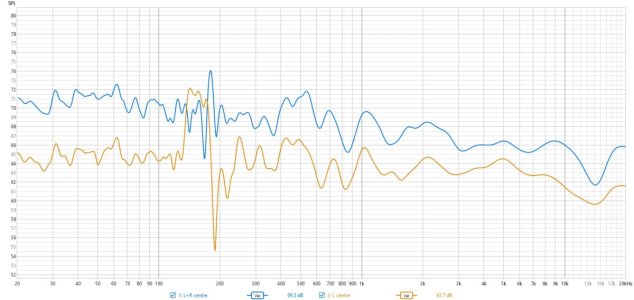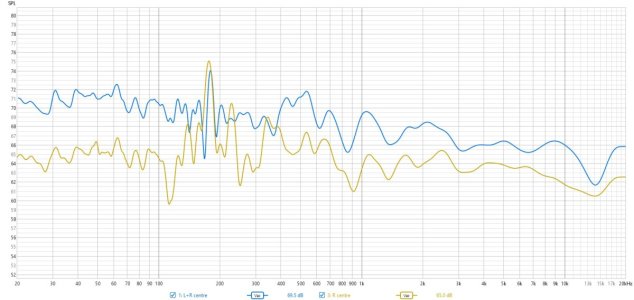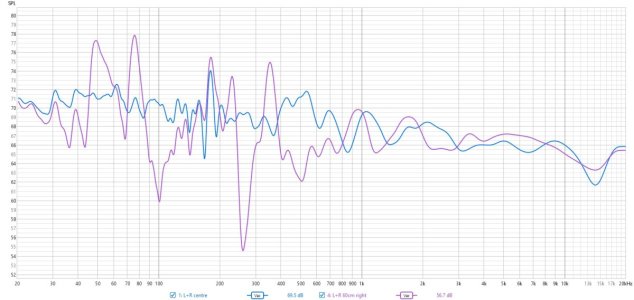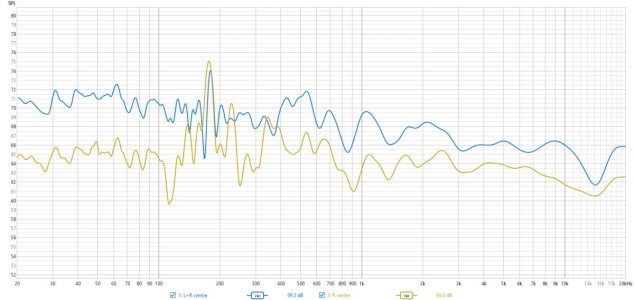In that case the dips could be a result of either SBIR (interference of a loudspeaker direct sound with sound reflected of walls) or interference between the two loudspeakers. I'd suggest to first try to optimize individual channel responses - ideally with placement.
Then you can compare the differences in individual channel and summed channel responses (which will always exist to some extent).
Note that if you optimize for a smooth combined channel response by boosting dips that are exclusive to it, you will introduce new peaks/resonances to individual channel responses. In other words optimizing for the combined channel response in some frequency range will favor center-panned (or mono) content, at the expense of hard-panned (stereo) content. The opposite is true as well.
However, given that we're less sensitive to dips than the peaks, I'd personally rather have some dips in the summed response with no peaks in the individual channel responses.
But in the end, if you prefer the sound with this new EQ that is of course perfectly OK!




